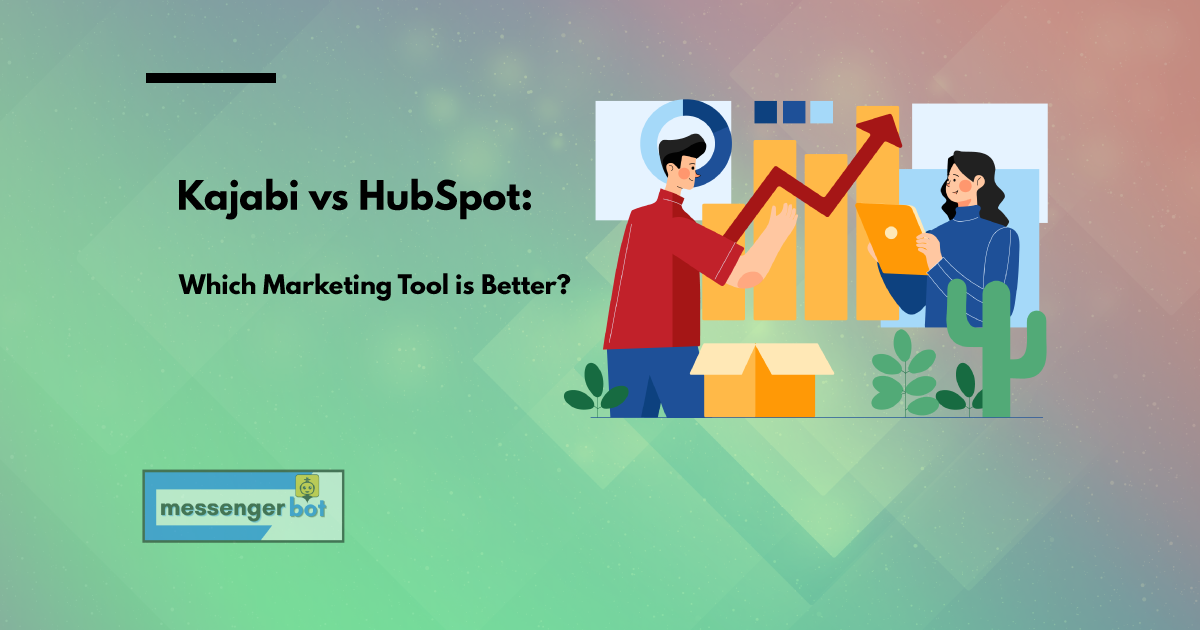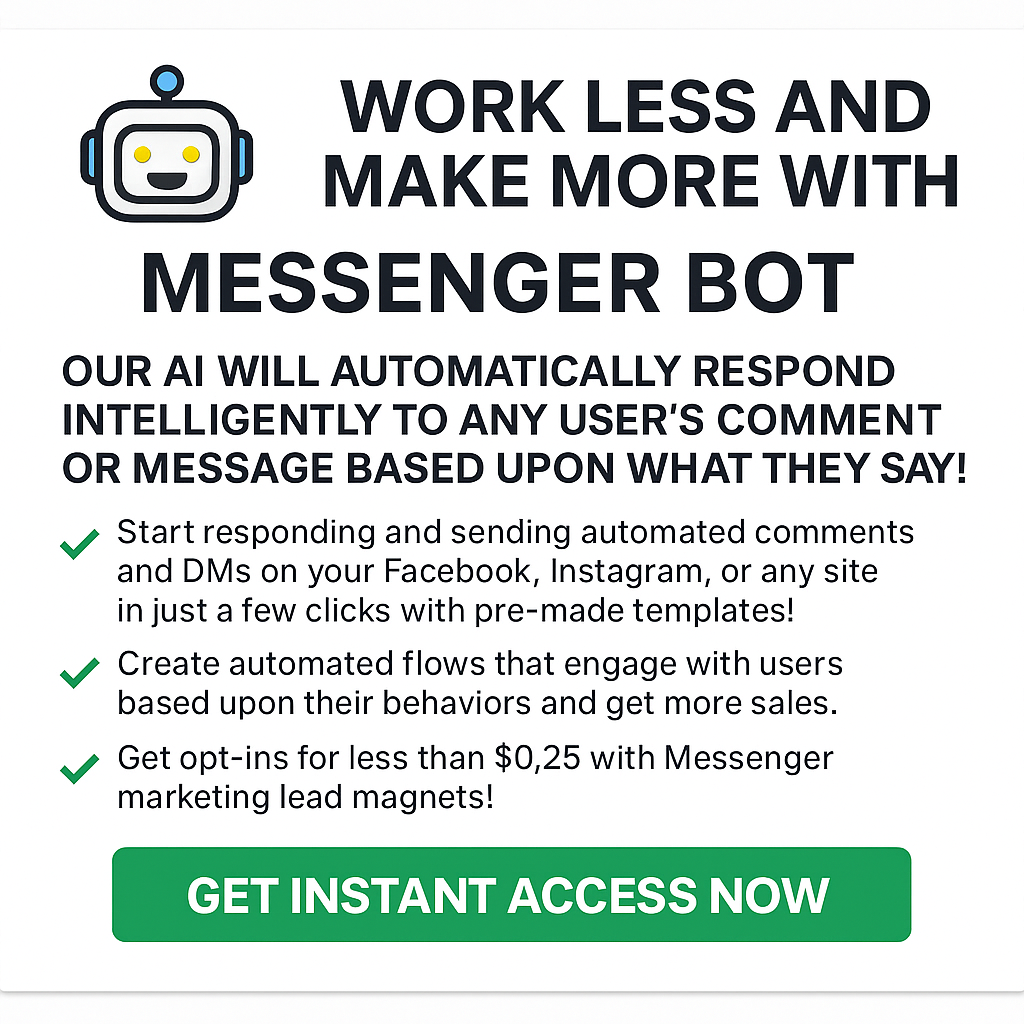Marketing tools are a dime a dozen, but which one is the best for your business? In this blog post, we’re going to compare two of the most popular marketing tools on the market: Kajabi vs HubSpot.
In this blog post, we will compare and contrast two popular marketing tools to help you decide which one is best for your business. Hubspot has been around since 2006, making it the older of the two platforms. Kajabi was created in 2011 with a focus on small businesses that want to avoid expensive software fees. Both products offer similar features including email marketing, video hosting, landing pages, and more!
What is Kajabi?

Kajabi is an all-in-one platform that provides a complete sales and marketing solution for internet marketers.
Kajabi allows users to create, host, distribute & track videos on the web easily. With its built-in tools, anyone can share their knowledge of any subject or industry with the world.
How does Kajabi work?
Kajabi is a platform that helps you create and sell online courses. It has all the tools you need to create a course, market it, and make sales.
Kajabi’s main feature is its built-in content management system (CMS). This makes it easy to create and manage your content, including videos, slideshows, PDFs, and quizzes.
Kajabi also includes a range of marketing tools to help you promote your courses. These include email marketing, social media integration, and built-in SEO features.
Finally, Kajabi offers a powerful sales and checkout system that makes it easy to sell your courses online.
What is kajabI used for?
Kajabi is one of the most popular web applications for creating an e-learning platform, membership site, or even a social network. It’s perfect to create your own blog where you can post anything from tutorials, strategies, and more.
Kajabi is known as WordPress but with some extra features that are very useful in terms of online business because it has everything you need to create products, content, courses, and more.
Kajabi is very intuitive so it takes only a few minutes to learn how to use its basic functions. You can easily integrate this platform with your other social media accounts like Facebook or Twitter which makes it even better for marketing purposes.
Why choose Kajabi?
Kajabi is an all-in-one solution for online businesses with its own website builder, email marketing service, and support team.
Kajabi has everything you need to create a professional-looking business blog or e-commerce store. It’s like having your very own digital storefront!
All of the tools are built into one app with no additional fees, making it an affordable option for small business owners.
Plus, Kajabi has a built-in learning management system (LMS) that you can use to create and sell online courses.
What is Hubspot?

HubSpot provides easy-to-use tools for creating, optimizing, and managing your website, landing pages, blog posts & social media campaigns so that customers can engage with your business on their own terms – without the help of a marketer or developer.
It is easy to use and has features like email marketing, landing pages & analytics that every business needs when they’re getting started. HubSpot is also a great option for businesses that are growing and need more advanced tools to help them scale.
Kajabi vs HubSpot Features Comparison
Marketing tools are becoming increasingly complicated these days, with so many options to choose from. It can be hard to decide which platform will work best for the needs of your business or organization.
Both Kajabi and HubSpot are powerful tools that can help you in managing different aspects of marketing—from landing pages to email campaigns, social media management, blogging, and more.
But which one is the best? Let’s take a look at some of the features of each platform to see how they compare.
Email Marketing Automation

Email marketing automation is important because it can bring you more sales. When marketing automation tools are integrated into your e-commerce platform, then you’ll be able to do everything from creating an email list and sending out emails to following up with customers after they’ve purchased something online.
Email marketing automation in Kajabi is very easy, and it’s one of the platform’s most popular features. You can automatically add subscribers when they buy something from your online store or subscribe to your list. Or, you can use custom-built forms in order to collect email addresses for people that aren’t necessarily customers yet (for example blog readers).
HubSpot’s email marketing automation is a little more complicated than Kajabi’s. HubSpot offers many more features, such as the ability to create drip campaigns and send out personalized emails based on customer behavior. If you’re looking for a lot of control over your automated emails, then HubSpot is probably the better choice. But if you’re looking for something that’s easy to use and gets the job done, then Kajabi is a good option.
In terms of email marketing automation, Kajabi is probably the better choice for beginners. It’s very easy to use, and it covers the basics without getting too complicated.
Mobile and Desktop Platforms

A marketing tool must have the ability to be used across multiple platforms, especially if it is being accessed by customers. Not all customers are going to access a marketing tool on their computer or laptop, so an app that can also be accessed via a mobile device will offer more value for your customer base. If you want to know which tools are specifically designed with this in mind, you should consider Kajabi and HubSpot.
Kajabi is designed to be used across all devices. The desktop platform is a little more robust, while the mobile app is specifically designed for on-the-go use. You can create and edit your courses and content, check sales data, and manage your account from anywhere with an internet connection.
HubSpot is also designed to be used across all devices. The main difference is that HubSpot offers more features on the desktop platform than on the mobile app. However, you can do most things on the go that you can do on a computer. For example, you can create and edit landing pages, track your website traffic, and manage your social media channels from anywhere.
In terms of mobile and desktop platforms, HubSpot and Kajabi are both equal. They offer the same basic features across all devices, with a few differences here and there. If you’re looking for a marketing tool that will work well on all platforms, HubSpot and Kajabi are both good options to consider.
CRM

CRM is important because it can help you stay on top of your customers.
CRM helps you reach out to people, track sales and orders, manage customer data, etc. It is critical for any business that wants to grow its customer base or retain current ones.
CRM is usually included in most marketing automation tools.
When looking for a CRM, make sure it offers features like contact management, sales tracking, order tracking, customer data management, and marketing campaign management. It’s also important to find a CRM that integrates with the other tools you’re using, like your email marketing tool and your e-commerce platform.
Kajabi’s CRM is useful in helping you stay on top of your customers and help them at every stage. It’s designed to make it easy for marketers, business owners, and salespeople to manage their contacts, follow up with leads, track prospects’ engagement over email, or social media channels like Facebook Messenger chatbots, LinkedIn Inmail messaging tool, etc.
Kajabi’s CRM also integrates with other tools, like your email marketing tool and e-commerce platform. This makes it easy to keep all of your customer data in one place and track how customers are interacting with your brand across different channels.
HubSpot’s CRM is designed to help you reach out to more people, track sales and orders, manage customer data, and measure the success of your marketing campaigns. It includes features like contact management, sales tracking, order tracking, lead scoring, and email marketing campaign tracking. HubSpot’s CRM also integrates with other tools you’re using, like your e-commerce platform and email marketing tool.
HubSpot also offers a free CRM for small businesses. This makes it easy to get started with HubSpot’s CRM and see the benefits of using it for your business.
In terms of CRM, both Kajabi and HubSpot offer similar features. The main difference is that you can get started with a free CRM using HubSpot, while Kajabi offers only the paid version of its CRM.
However, if you’re looking for a more comprehensive marketing automation tool that includes CRM, then HubSpot is the better option. Kajabi’s CRM is useful in helping you stay on top of your customers and measure the success of your marketing campaigns, but it doesn’t offer as many features as HubSpot’s CRM.
So, if you’re looking for a CRM that’s easy to use and offers great features, then Kajabi is the better option. However, if you’re looking for a more comprehensive marketing automation tool with built-in CRM functionality, then HubSpot might be right for your business.
Blogging Integration

Blogging integration is important because it allows you to import your content into the marketing tool so that you can easily grow an email list and send those subscribers targeted offers.
Blogging integration is also important because it allows you to track how well your blog content is performing, and make changes based on that data.
In addition, blogging integration can help you create landing pages for your offers, and even design entire sales funnels around your blog content.
Ultimately, if you want to use your blog as a powerful marketing tool, you need to find a marketing tool that integrates well with it.
Kajabi’s blog feature is easy to use, and it even allows you to import your existing blog posts into the tool.
Once inside Kajabi, you’ll be able to create new landing pages for your offers based on those imported articles, or re-purpose them as sales letters through their drag & drop editor.
When it comes time to send out an email campaign, you can also use Kajabi’s “build it once, send it to many” feature to blast your content out to all of your subscribers at once.
Plus, you’ll be able to track the performance of each blog post with their built-in analytics, so you can see what content is resonating with your audience and what’s not.
Kajabi’s blogging integration makes it quick and easy to turn your blog into a powerful marketing tool.
HubSpot’s blog feature is a little bit more complicated than Kajabi’s, but they do have some powerful features built-in.
For example, you’ll be able to import your existing content from WordPress or Blogger into the tool with one click.
Plus, HubSpot’s blogging integration allows you to create landing pages for your offers and design entire sales funnels around your blog content.
One thing HubSpot doesn’t have is an “Email Blast” feature, so you’ll need to use a separate tool called SendGrid if that’s important for your business.
Overall, both Kajabi and HubSpot offer good blogging integration features, but they’re not 100% alike in every way.
In terms of blogging integration, HubSpot and Kajabi are both good choices.
HubSpot offers a few more features, such as the ability to import content from WordPress or Blogger, while Kajabi makes it easy to create landing pages and blast your content out to subscribers with their “build it once, send it to many” feature.
Ultimately, the best choice for your business will depend on what you need to accomplish with blogging.
Campaign Reporting

Campaign reporting is important in a marketing tool because it allows you to track the success of your campaigns and see which ones are performing the best. This information can help you make decisions about future campaigns.
Campaign reporting is defined as “the process of gathering information about specific types of activity that are associated with a larger marketing initiative.” It is important because it helps marketers to determine the success or failure of an ad campaign and then adjust their strategies accordingly.
Kajabi’s campaign reporting capabilities are very similar to Hubspot. They both have campaign performance tracking capabilities, which allow marketers to measure the success of their ad campaigns more easily.
Kajabi campaign reporting allows marketers to track activity by source, medium, and keyword. This information is helpful in determining the most effective sources for a campaign’s success. The reports also help marketers determine which keywords are worth bidding on going forward.
HubSpot’s campaign reporting is a little more robust than Kajabi’s. HubSpot provides the same information as Kajabi but also allows marketers to track conversions and goal completions from their ad campaigns. The ability to measure these metrics gives marketers even more insight into whether or not an ad strategy is effective.
HubSpot also offers a more detailed reporting interface, which allows marketers to drill down into specific sections of the reports.
In terms of campaign reporting, HubSpot and Kajabi are very comparable. They both offer the ability to track campaign performance, source, medium, and keyword information. HubSpot’s additional reporting features give it a slight edge over Kajabi, but Kajabi is still a very effective tool for campaign reporting.
Which marketing tool is better for you depends on your needs as a marketer. If you need detailed conversion tracking, HubSpot is the better tool. If you are more interested in campaign performance tracking and less concerned with conversions, Kajabi is a great option. Whichever tool you choose, make sure that it has robust reporting capabilities to help you measure the success of your marketing campaigns.
Social Media

Social media is important because it is a free and effective way to spread the word about your business. Many people use social media every day, whether it be Facebook, Twitter, or Instagram.
Social media is defined as the use of web-based and mobile technologies to turn communication into interactive dialogue, facilitate collaboration among individuals and create online communities.
Kajabi’s social media features are built into the platform.
You can post to social media by creating a course, uploading videos and images, or having live webinars. You can also share your posts on outside social media platforms if you choose to do so.
Kajabi has a “share” button that allows you to share your course on social media, Facebook groups, and even in direct messages. This is a great way to promote your course across multiple platforms.
Hubspot has the ability to share content on Facebook, Twitter, and LinkedIn. However, there are no additional features built into the system like Kajabi’s sharing button which allows you to post directly onto other social media sites.
Hubspot also has a “share” button, but it is located in the top right corner of the post. This makes it more difficult to share content on social media since people are not used to looking for that button there. It’s also less visible than Kajabi’s sharing button.
In terms of social media, Kajabi is better than Hubspot because it has more features built into the system and is easier to use. Social media sharing in Kajabi allows you to post on Facebook, Twitter, or Instagram all from one platform which makes your job easier.
HubSpot’s social media sharing button is located in a less convenient location compared to Kajabi and it’s not as easy to use. Additionally, HubSpot does not have any features that are built into the system like Kajabi’s live webinars and uploads.
Overall, Kajabi is a better marketing tool than Hubspot when it comes to social media.
Integrations

Integrations are important because it allows you to connect your marketing tool with other tools that support your work. The more integrations your marketing tool has, the better it is because you can work with other tools and save time.
Integrations are defined as the process or technique of joining two or more things together to form a single entity. In the world of marketing, integrations are key because they allow you to connect your marketing tool with other tools that support your work. The more integrations your marketing tool has, the better it is because you can work with other tools and save time.
Kajabi’s integration capabilities are extensive. It includes both built-in integrations as well as an “App Store” where you can find additional integrations that work with your marketing tool. Kajabi has a wide range of integrations, including popular tools like Salesforce, Google Analytics, and Mailchimp. Kajabi’s integrations are designed to make your life easier by automating tasks and saving you time.
HubSpot differs from Kajabi in that it has a much wider range of integrations. HubSpot integrates with over 500 tools, while Kajabi integrates with around 50 tools. HubSpot’s integrations are also more powerful, allowing you to do more things with them. For example, HubSpot allows you to create custom integration workflows, which Kajabi does not. HubSpot’s integrations also allow you to automate more tasks with it than Kajabi, which only allows for basic automation (e.g., sending an email whenever someone subscribes or unsubscribes from a list).
In terms of integrations, HubSpot is the clear winner between Kajabi and HubSpot.
Kajabi has a much wider range of integrations, but they are weaker in terms of what you can do with them. Hubspot’s integrations allow for more customization and automation than Kajabi does, which makes it an overall better choice if your priority is integrations.
Analytics

Analytics is important because it shows you how your content is performing when people are online, and what kind of traffic sources they’re coming from. Analytics also lets you know which part of your website needs to be optimized in order for viewers to convert into leads.
Analytics tell you the reason why readers aren’t converting into customers or subscribers too. If you’re running a paid campaign, analytics can help you determine whether or not the money you’re spending is worth it.
Without analytics, you’re just flying blind and hoping that your marketing strategy works. With analytics, however, you have all the information you need to make necessary adjustments so that your marketing efforts are more effective.
Kajabi analytics is extremely comprehensive. It tracks everything from how many people are visiting your website to where they’re coming from and what actions they take (or don’t take) on your site. You can also track how much money you’re making from each source of traffic and see which pieces of content are the most popular.
Kajabi Analytics also integrates with Google Analytics so you can get an even more detailed view of how your website is performing.
Kajabi’s analytics is a great way to see what’s working and what isn’t so you can make the necessary changes to your marketing strategy.
HubSpot is an all-in-one marketing tool. It basically does everything you need it to do in order for your business to grow and succeed so there isn’t really a whole lot of need for other tools. HubSpot’s analytics is pretty robust, but they don’t integrate with Google Analytics like Kajabi does which means the data won’t be as detailed.
HubSpot also doesn’t have any kind of lead scoring or conversion tracking which means you won’t be able to see what’s working and what isn’t in your marketing strategy. HubSpot is a great tool for beginners because it has everything they’ll ever need, but if you’re looking for better analytics capabilities then Kajabi might be a better choice.
In terms of analytics, HubSpot and Kajabi are pretty similar. If you’re a beginner, HubSpot might be a better choice because it’s easier to use and doesn’t require as much customization. However, if you have more experience with marketing tools or want to give your business the best chance of succeeding then Kajabi is probably going to be a better option for you.
Customer support

Customer support is important in a marketing tool because you want to provide your customers with the best experience possible.
Customer support is especially important when it comes to one-on-one coaching and consulting (which I do). It’s crucial that my clients feel supported, which is why we work together for three months on an individual basis. This ensures that they get the results they’re looking for.
Customer support is critical to success, and it’s one of the main reasons why I’m loyal to Kajabi over HubSpot (at least for now).
Kajabi’s customer support is excellent. They have a team of experts who are available 24/11 to help you with whatever you need. They also have an extensive library of resources, including video tutorials and articles, that can help you get started (or continue) on your journey to success.
In addition, Kajabi offers a live chat feature that can help you solve problems in real-time.
Kajabi’s customer support is top-notch, which is one of the reasons why I continue to use it.
Hubspot’s customer support is not as good as Kajabi’s. They have a team of experts who are available during business hours, but they do not offer live chat (which can be a deal-breaker for some people).
They also don’t have the same level of resources that Kajabi does. HubSpot has video tutorials and articles, but they’re not as in-depth as Kajabi’s.
HubSpot also offers one-on-one coaching and consulting, but it’s not as extensive as Kajabi’s.
In terms of customer support, Kajabi is a better option than HubSpot. Kajabi has excellent customer support, as well as more resources, which makes it easier for you to learn and grow your business.
If you want top-notch support from experts who are available 24/11, I would recommend going with Kajabi over HubSpot.
Ease of Use

Ease of use is important in a marketing tool because it determines how much time you spend using the tool. The less time you spend trying to use the tool, the more time you can spend on other tasks.
Ease of use is defined as how easy it is to use a tool. This includes how intuitive the user interface is and how much training or documentation is needed to learn how to use the tool.
Kajabi is very easy to use. The user interface is very intuitive and there is a lot of training and documentation available to help you learn how to use the tool.
Kajabi’s ease of use is unique because you can use it with any skill level. You don’t need to be a marketing expert or have any coding experience to use Kajabi effectively.
Hubspot is not as easy to use as Kajabi. The user interface is not as intuitive and there is less training and documentation available to help you learn how to use the tool.
You do need to be a marketing expert or have coding experience to use HubSpot effectively.
Hubspot also offers more features than Kajabi, which can be overwhelming to someone just starting out.
In terms of ease of use, Kajabi is the clear winner. It is more intuitive and easier to use than Hubspot. This makes it a better choice for someone just starting out in marketing. Kajabi also offers more training and documentation than Hubspot, which makes it easier to learn how to use.
Frequently Asked Questions
How does Kajabi compare to more established products, such as HubSpot?
Kajabi is a newer product and, as such, may not have all the features of more established products. However, it does have some unique features that make it worth considering. For example, Kajabi allows you to create membership sites and courses, which can be valuable for businesses that want to sell online courses or provide access to exclusive content to their customers. Additionally, Kajabi integrates with a number of other popular tools, such as Salesforce and Zapier, which makes it easy to connect your marketing efforts with the rest of your business operations.
Ultimately, whether or not Kajabi is the right tool for you depends on your specific needs and preferences. But, it is definitely worth considering if you are looking for a tool that can help you create and sell online courses or access exclusive content.
What are the limitations that come with the free HubSpot CRM?
The free Hubspot CRM has a lot of limitations. You can only have up to 500 contacts, and you can only send 100 emails per day. If you need more than that, you’ll need to upgrade to a paid plan. Hubspot also has limited reporting capabilities with the free plan. You won’t be able to see data about leads or customers who converted, for example. You also can’t create custom dashboards or export data. If you need these features, you’ll need to upgrade to a paid plan. Finally, the free Hubspot CRM doesn’t include any of Hubspot’s marketing automation tools. So if you want to use those tools, you’ll need to upgrade to a paid plan.
What is kajabi course creation like?
Kajabi is a course creation tool that is designed to help you create and sell online courses. The platform is easy to use, and it includes all of the features that you need to create and market your courses.
One of the best things about Kajabi is that it comes with built-in marketing tools. You can quickly create beautiful landing pages and sales pages, and you can also create email campaigns to promote your courses. Plus, Kajabi integrates with all of the major email marketing platforms, so you can easily send out your promotional materials.
Why choose Kajabi?
Kajabi is a fully-managed online education platform. You can easily convert your blog into an eLearning course by adding video, audio, and text to it. It also allows you to use different modules like discussion boards, quizzes, etc. to make learning more interesting.
Kajabi is a great platform to start building your online course. It is easy to use and comes with all the features you need to create and sell your courses online.
Plus, Kajabi offers a wide range of integrations which makes it easy to connect with other tools and services you may be using.
What are some alternatives?
Some alternatives are Facebook ads, MailChimp, and Canva. Each of these tools has its own pros and cons which you can read about on their respective websites.
Ambitionally vs Kajabi
Ambitionally is a great platform for creating and managing online courses. It has all the features you need to create beautiful, engaging courses, and it’s easy to use. However, Kajabi is even better than Ambitionally in some ways.
First, Kajabi offers more integrations with other tools. This means that you can connect your course to various services that could help you with your marketing efforts. You can also create a link to your course from your website, which can help you increase enrollment.
Second, Kajabi is more affordable. Ambitionally can be expensive if you need to use all of its features, but Kajabi offers a variety of pricing plans that fit any budget.
Finally, Kajabi has a better support system. If you have any questions about how to use the software, you can quickly get in touch with Kajabi’s helpful support team.
Thus, if your business is looking for a marketing tool that will help it grow and engage students, then Kajabi is likely the better choice than Ambitionally.
Kartra vs Kajabi
Kartra is an all-in-one marketing tool that offers a wide range of features, while Kajabi is a more specialized platform designed specifically for online courses and digital product sales.
Kartra is a better option if you need a comprehensive marketing solution, while Kajabi is better if you are looking for a tool to create and sell online courses.
Kartra offers more features than Kajabi, including email marketing, CRM, landing pages, and payment processing. However, Kajabi is much easier to use than Kartra, which can be difficult to navigate.
Kajabi offers more support for online course creation than Kartra, which is the main feature that sets it apart from other marketing tools. However, Kajabi doesn’t have as many integrations and advanced settings as Kartra does.
Kajabi is the better option if you are looking for a simple, easy-to-use marketing tool, while Kartra is a better option if you need more features.
What are the major downsides of HubSpot?

Hubspot is a great marketing tool, but it can get expensive. The pricing plans can be a bit overwhelming, and if you need extra features or storage, the costs can add up quickly. Additionally, HubSpot’s customer service can be difficult to work with at times. They are often slow to respond to requests and can be unhelpful when it comes to solving problems. Overall, HubSpot is a great tool, but it can be challenging to use and can be expensive.
Why do small business owners need an all-in-one platform?

This is a question that is often asked by business owners. The answer to this question basically depends on the needs of your business and what you are trying to achieve with your website in terms of marketing, sales, or both.
If you are looking for a platform that can help you with all aspects of your marketing, then Kajabi is the better option. With HubSpot, you will need to purchase and use additional tools to cover all of your marketing needs. Kajabi includes everything you need to create landing pages, build an email list, create and sell products, collect leads, and much more.
However, if you are looking for a tool that can help with marketing automation, then HubSpot is the better choice. Some of the features included in Kajabi are only available through additional purchases or subscription plans.
With both platforms being web-based it means you can access them from anywhere. Kajabi and HubSpot both offer free trials so that you can test them out before committing to a monthly subscription plan or purchase.
Which is the cheapest alternative to HubSpot?
Kajabi is the cheaper alternative to HubSpot. Kajabi starts at $149/month, while HubSpot starts at $200/month. If you’re looking for a more affordable option, Kajabi is definitely the way to go. Plus, it offers all of the features that HubSpot does, so you won’t be missing out on a thing.
Which is better, Kajabi next or new Kajabi?
Kajabi next is the latest version of Kajabi, and it includes a number of new features and enhancements. Some of the new features include an updated design, a new pricing plan, and more integrations.
New Kajabi is an entirely new platform that is built on a completely different codebase. It includes a number of features that are not found in Kajabi next, such as the ability to create unlimited courses and memberships, custom domains, and more integrations.
The answer depends on your needs and preferences. If you need a platform that offers a lot of flexibility and features, then the new Kajabi is the better option. If you are looking for a simple, easy-to-use platform with all the basics, then Kajabi next is the better choice.
Conclusion: Which Should You Choose?
You now know the differences and similarities of both marketing tools.
The bottom line is this: choosing a tool should depend on what you want to do with it, how much effort you will put into learning it, and whether or not your team can keep up with its pace. If you think Kajabi’s simplicity fits your needs better and you’re willing to learn it, go for it! But if HubSpot’s features appeal more to you and your team is comfortable with its complexity, then HubSpot would be the better choice.
No matter which tool you choose in the end, make sure to use it effectively by creating valuable content, building an audience, and tracking your results.





